The Innuh's pyramid, a 'new' adventure game from 1984
Some technical details
The Java version in Italian
Conclusion
Acknowledgements
More of that, please!
Introduction
This game is a text adventure, also called an interactive fiction. You play it by giving simple orders to your alter-ego in the game. Explore the situations and beware to the risks!
The game is currently playable on the Commodore 128 (in 80-column mode), on the VIC-20 with the 16K RAM expansion, on the C64, Plus4, PET with 32K, the Sinclair ZX Spectrum 48K and on a modern computer terminal.
To repeat the description of the current location, type look around, or see, or simply *. Keep in mind that you are not Hercules and you can not carry too many objects with you. Use inventory or i to know what you are carrying around. All recognized words can be abbreviated using the first four letters.
The Innuh's pyramid was built three thousand years ago, somewhere in the desert. Ancient tales say it is full of treasures, but nobody who dared to try to reveal its secrets could come back to tell his adventure.
I'll be your eyes and ears. Your goal is to find all the treasures hidden in the pyramid.
Good luck, you'll need it!
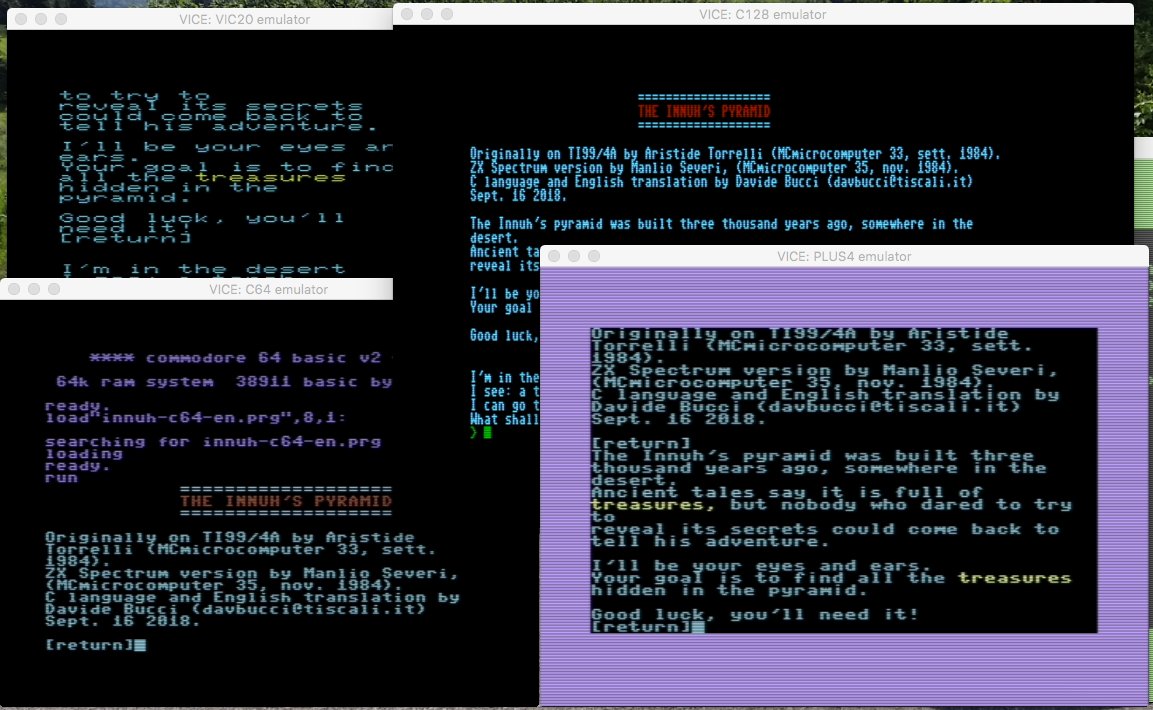
Innuh's pyramid is a multiplatform game.
Some technical details
This game was published as a type-in BASIC program for the TI99/4A by Aristide Torrelli (MCmicrocomputer 33, sett. 1984) and then ported to the ZX Spectrum by Manlio Severi (MCmicrocomputer 35, nov. 1984). In 2011, I rewrote the game in Java and in 2018 I did the same for the C language.
Remarkably enough, in the original version of the game, the name of the pyramid was Iunnuh, and not Innuh. As you surely know, hieroglyphs do not use vocals. The second variant comes from a different transliteration of the pharaoh's cartouche in the pyramid (more seriously, I mis-read the title of the game and I did not realize that for 25 years!)
The game is simple yet intriguing. I wrote myself a parser a little more flexible than the one originally present in the type-in programs and I realized that I could compile the sources for a huge variety of machines and in particular for the 8-bit Commodore computers thanks to the Cc65 compiler. It has been a little tricky to let the game run in the Commodore VIC-20 + 16K, but I received useful feedback from the Denial Forum members.
I could also compile the game with the Z88dk compiler targeting the ZX Spectrum. It works! The generated .tap file, however, works perfectly in the emulator but show some issues when charged by a SD card and a DivMMC Future.
The game was originally in Italian, but I could translate it in English, so that many that could not play to the original game could finally play it 34 years later. I was also targeting machines such as the C128 that had much more memory available than the original TI99-4A with its 16KiB. So, except for the VIC-20, I prepared extended descriptions for the places that are shown.
torch, key, girder, sign, door, flute, skull, necklace, skeleton, altar, bandages, axe, batteries, drugs, cobra, sapphire, sword, vase, sarcophagus, mask, mommy, sand, room, hieroglyphic, room, hallway, tunnel, ladder, north, south, east, west, up, down, n, s, e, w, above, below, switch (off), exit, inventary, i, look, go, run, walk, see, take, grab, put, leave, give , open, *, play, read, wave, dig, eqt, drink, close, grab, destroy, light, switch off, jump, change, around, get
Here is a list to the words that the game understands
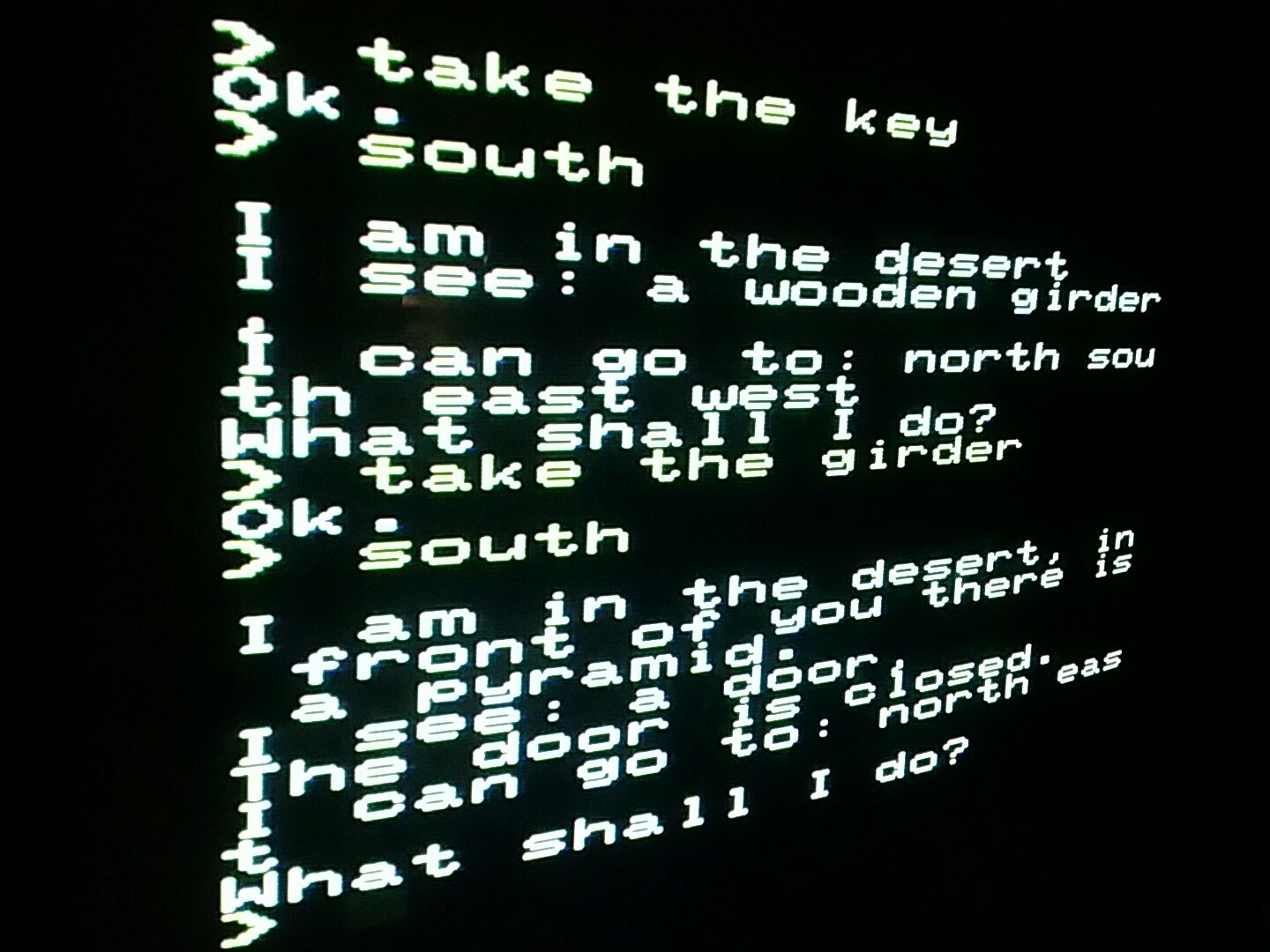
Innuh's pyramid running on the Commodore VIC-20
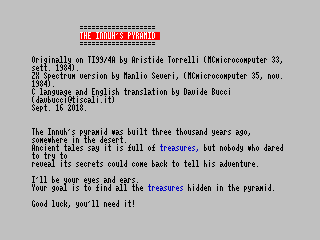
Innuh's pyramid running on the 48K Sinclair ZX Spectrum
The Java version in Italian
In 2011 I put together a version of this game (in Italian) as an applet. It was clear back then that applets were not the future of the web as they were thought to be in 1999. However, they were still run in modern browsers and it allowed many people to play the game without having to install anything.
If you are curious, the source code of the applet is available on SourceForge https://sourceforge.net/projects/innuh/ and is distributed with license GPL v.3.
I still leave the applet here, if someone still likes this kind of things. The parser is the original one that expects the verb, a two-letter article and an object. Write in lowercase.
Conclusion
I had a great fun working on this game. It was the case in 2011 when I prepared the Java applet and it was still true in 2018 while I was working with the C language and I tested it on my vintage Commodore machines.
The game is simple, the parser is limited and there are some incoherences. But adventure games in 1984 were not what they now are with tools like Inform. I hope that you will enjoy the atmosphere you (or better your alter ego) breaths in the game.
Acknowledgments
I would like to thank Aristide Torrelli who is the author of the original game. He has a website dedicated to interactive fiction and he also developed a complete system for adventure games that he called AWS (for Adventure Writing System). He also published a following to the game described here.
I could get in touch with Aristide in september 2018 and I could at first thank him for the nice type-in program he gave us. I could also apologize myself for the misspelled name: it was Iunnuh, and not Innuh! Aristide has been very kind with me and he also authorized me to publish the source code with the GPL v.3 license that I regularly use for my open source programs.
More of that, please!
If you liked this program, have a look at the other things I wrote for old computers.
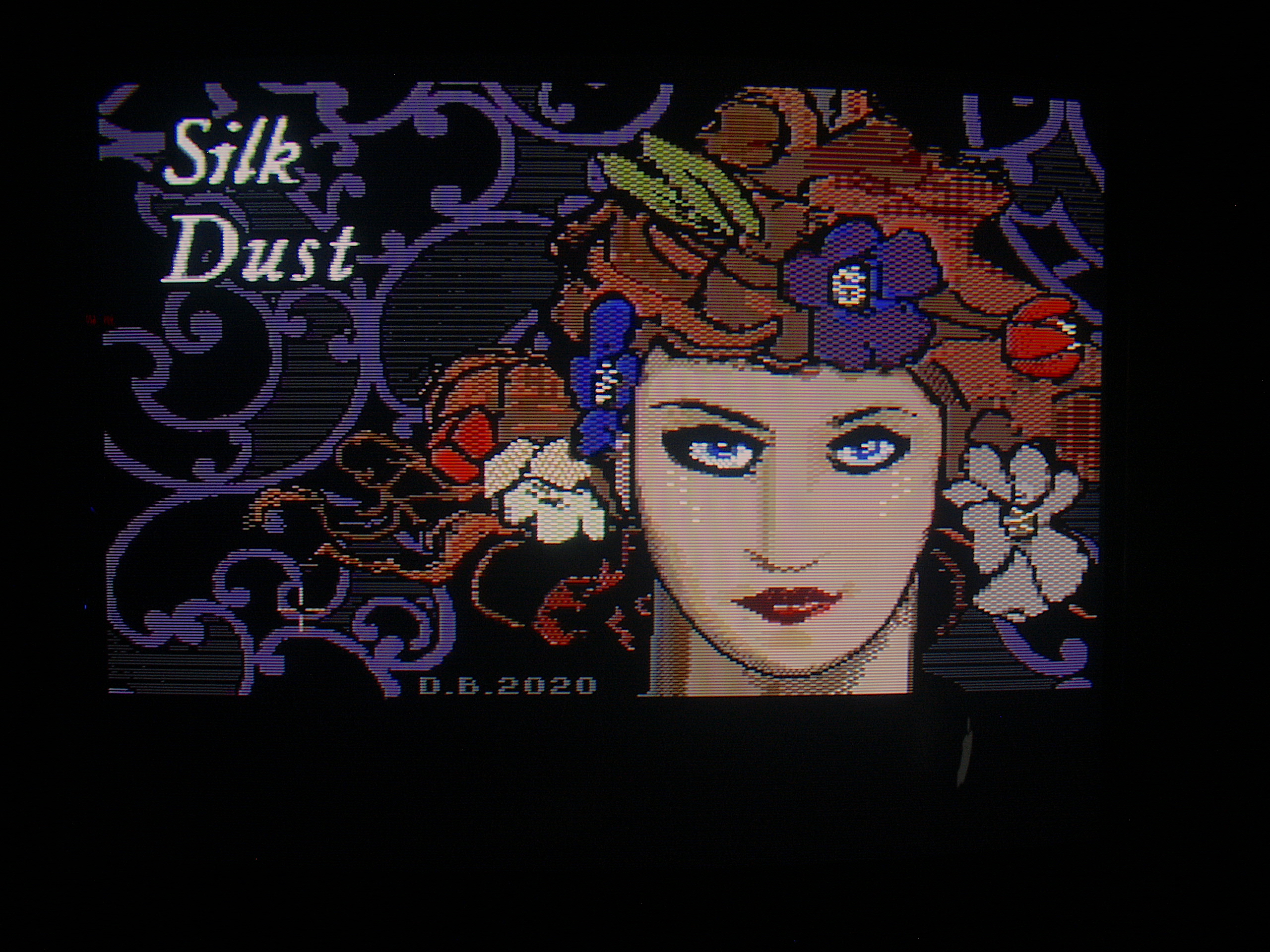
|
Silk Dust (En, 2020-2021) for C64, Plus4, VIC-20+24KB, MS-DOS... |

|
The Queen's Footsteps (En, 2019-2020) for C64, Plus4, VIC-20+24KB, MS-DOS... |
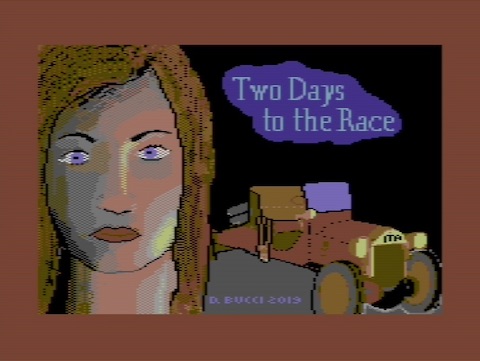
|
Two Days to the Race (En/It, 2018-2019) for C64, Plus4, VIC-20+24KB, MS-DOS... |
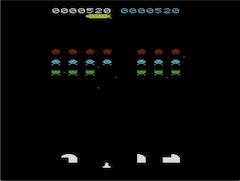
|
Alien Invasion: a VIC20 game written in 2018 for the VIC-20 |
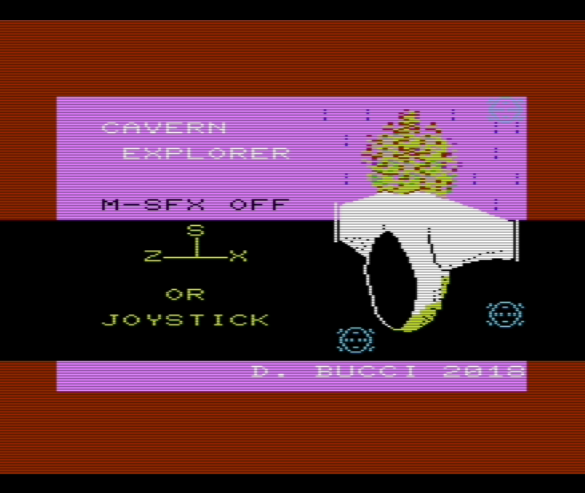
|
Cavern Explorer, another modern VIC-20 game (2018) |
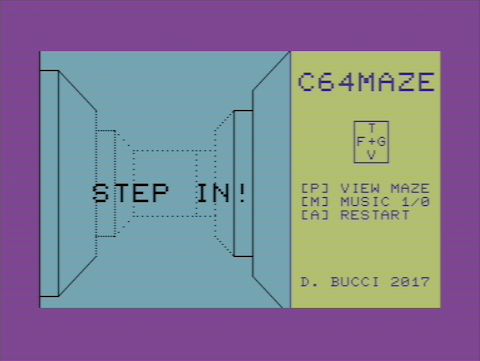
|
3D maze for the Commodore 64 (2017) |
Log
December 20, 2018: Added the version for the ZX Spectrum 48K.
September 22, 2018: Added cross-links to other vintage programs.
2011: First version of the page, with the Java applet
-------- Copyright (C) 2011-2018 Davide Bucci davbucci at tiscali dot it
This program is free software: you can redistribute it and/or modify it under the terms of the GNU General Public License as published by the Free Software Foundation, version 3 of the License. This program is distributed in the hope that it will be useful, but WITHOUT ANY WARRANTY; without even the implied warranty of MERCHANTABILITY or FITNESS FOR A PARTICULAR PURPOSE. See the GNU General Public License for more details. You should have received a copy of the GNU General Public License along with this program. If not, see http://www.gnu.org/licenses/.
